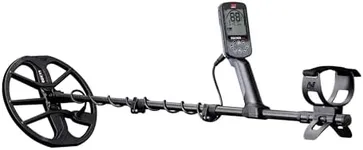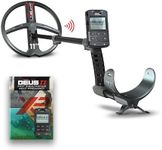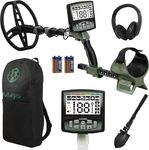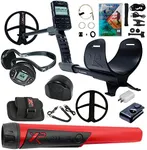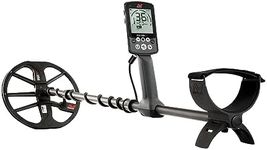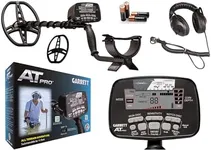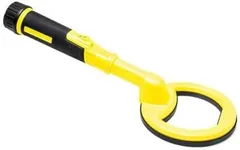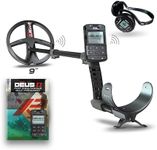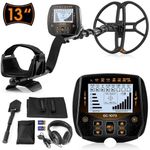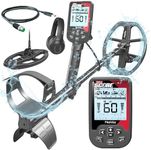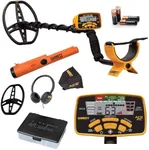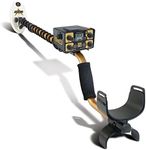Buying Guide for the Best Metal Detectors
Choosing the right metal detector can make your treasure hunting or hobby experience much more enjoyable and successful. The best approach is to think about where you plan to use the detector, what types of items you hope to find, and how much experience you have. Understanding the key features and how they relate to your needs will help you make a smart choice that matches your goals and environment.Operating FrequencyOperating frequency refers to how many times per second the detector sends an electromagnetic signal into the ground. This is important because it affects what types of metals and objects the detector is most sensitive to. Lower frequencies (around 3-8 kHz) are better for finding larger, deeper objects like relics or coins, while higher frequencies (above 15 kHz) are more sensitive to smaller, shallow targets like gold nuggets. If you mostly search for coins and relics, a lower frequency is usually best. If you want to find small gold pieces or jewelry, a higher frequency is more suitable. Some detectors offer adjustable or multiple frequencies, which can be helpful if you want versatility.
DiscriminationDiscrimination is the detector’s ability to distinguish between different types of metals. This feature is important because it helps you avoid digging up unwanted items like bottle caps or nails. Discrimination settings can range from simple (basic iron rejection) to advanced (customizable for specific metals). If you’re searching in areas with a lot of trash, a detector with good discrimination will save you time and effort. Beginners may prefer simple discrimination, while more experienced users might want advanced controls for fine-tuning.
Ground BalanceGround balance is a feature that helps the detector ignore signals from naturally occurring minerals in the soil, which can otherwise cause false signals. This is especially important if you plan to search in areas with highly mineralized soil, like beaches or goldfields. There are three main types: preset (fixed by the manufacturer), automatic (the detector adjusts itself), and manual (you adjust it yourself). For casual use in parks or yards, preset or automatic ground balance is usually enough. If you plan to hunt in challenging soils, manual ground balance gives you more control.
Search Coil Size and TypeThe search coil is the round part at the end of the detector that you sweep over the ground. Coil size and type affect how deep and how wide you can search. Larger coils can detect deeper objects but may miss small items and can be harder to maneuver. Smaller coils are better for finding tiny objects and working in tight spaces, but they don’t reach as deep. There are also different coil shapes, like concentric (good for general use) and double-D (better for mineralized ground). Choose a coil size and type based on the size of targets you want and the areas you’ll search.
Target Identification (Target ID)Target ID is a feature that gives you information about what kind of metal the detector has found, often through a number or icon on a display. This helps you decide whether to dig or skip a target. Some detectors have simple indicators (like tones or lights), while others have detailed digital displays. If you want to quickly identify coins, jewelry, or trash, a detector with clear target ID will be helpful. For beginners, simple systems are easier to use, while advanced users may appreciate more detailed information.
Water ResistanceWater resistance refers to whether the detector and its coil can be used in wet conditions or underwater. Some detectors are only splash-proof, while others have waterproof coils or are fully submersible. If you plan to search on beaches, in shallow water, or in rainy weather, water resistance is important. For dry land use, this feature is less critical. Make sure to check if just the coil or the whole detector is waterproof, depending on your needs.
Weight and ErgonomicsWeight and ergonomics refer to how heavy and comfortable the detector is to use for long periods. Lighter detectors are easier to carry and use, especially for children or people with less strength. Adjustable shafts and padded grips can also make a big difference in comfort. If you plan to hunt for several hours at a time, look for a detector that feels balanced and comfortable in your hands.
